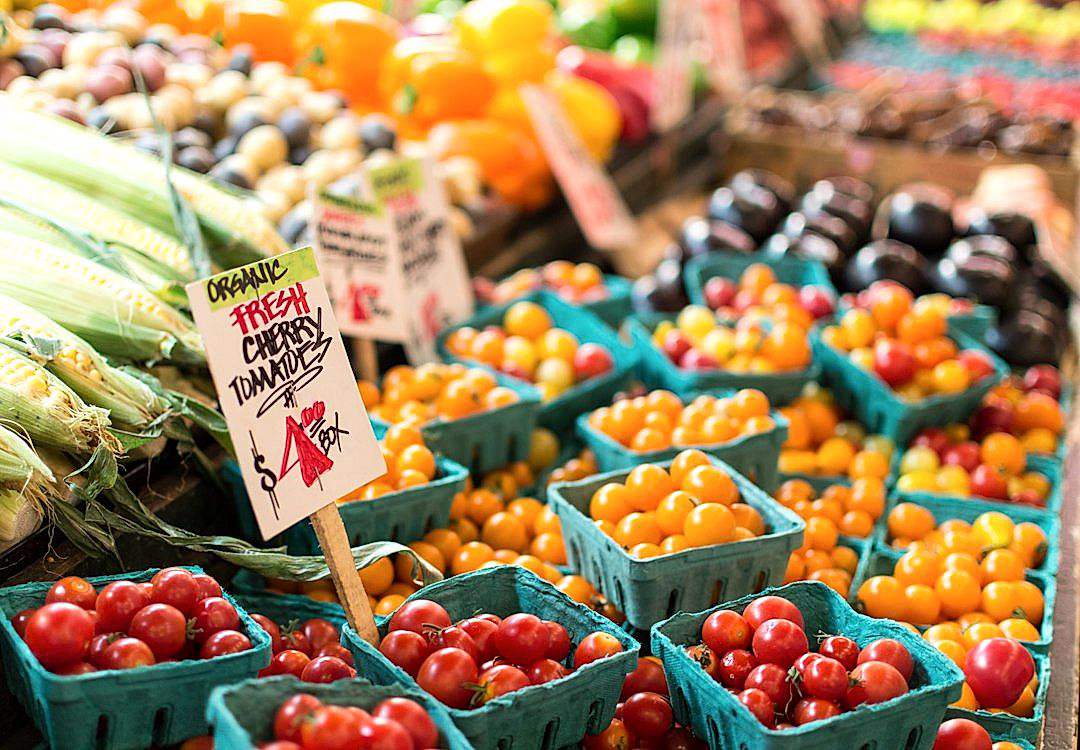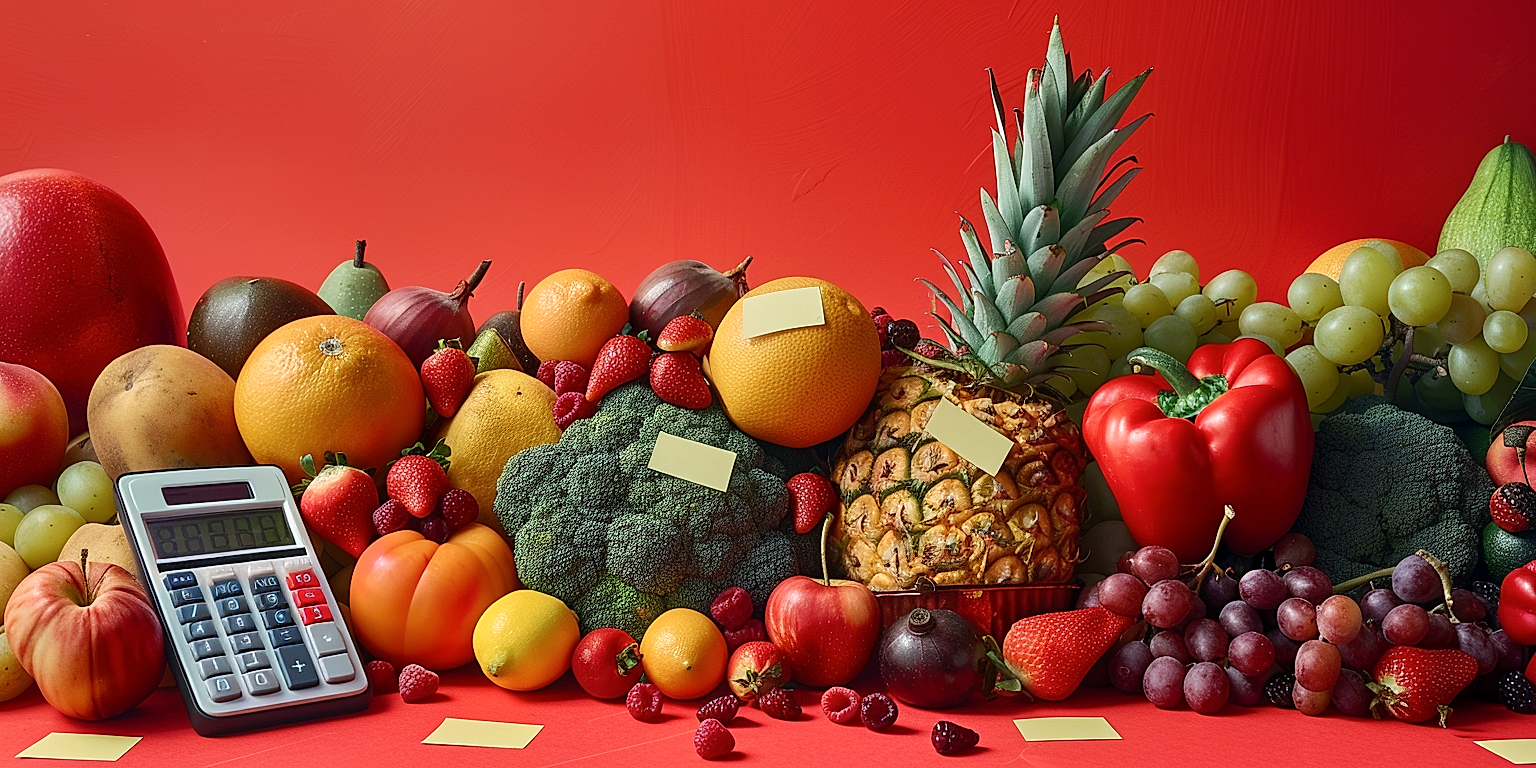Setting prices can be one of the critical management decisions in produce retail business.
Therefore, establishing a robust competitive pricing strategy is essential for your success in the fast-paced and increasingly competitive retail environment.
This process involves more than just undercutting competitors; it encompasses understanding market nuances, cost structures, and value perceptions.
A strategic pricing approach can drive profitability, increase sales, and enhance customer relationships.
It’s imperative to adopt suitable strategies to remain relevant and competitive.
This article aims to provide valuable insights and practical recommendation in that aspect.
Contents
Tips For Competitive Pricing In Produce Retail
1. Research competitor pricing regularly and thoroughly
One of the fundamental strategies in implementing competitive pricing in produce retail is to understand the pricing strategies of your competitors.
Without having a comprehensive knowledge about the market rates, it would make it challenging to position your prices strategically.
Thus, it becomes increasingly crucial to research and understand competitor pricing on a frequent and thorough basis.
In the dynamic and highly competitive world of fresh produce retail, staying updated about the competitors’ prices is not just an option, but a necessity for survival and growth.
It’s not just about getting the numbers, but understanding the reasons behind those numbers.
Factors like quantity, quality, brand image, and positioning can significantly influence pricing.
Knowing these can give you an edge in terms of providing superior value or price advantage to your customers.
There are a variety of tools and techniques available to effectively research competitor pricing.
Businesses can use price tracking software, conduct market surveys, or even hire mystery shoppers for real-time price monitoring.
Regular and thorough research can help you anticipate price fluctuations, understand the customer’s price sensitivity, and make informed pricing decisions.
It is important to not just limit your research to large competitors but also consider smaller businesses that might be innovating pricing strategies.
However, while it’s important to study your competitors, it’s also critical not to mimic them blindly.
Your pricing strategy should be aligned with your brand positioning and business objectives.
Competitor pricing research should be used as a guideline and not as a rule, allowing you to remain competitive without compromising your margins.
The ultimate goal of researching competitor pricing is to offer value to your customers while ensuring a healthy profit margin for your business.
Therefore, businesses should invest both time and resources into a systematic and detailed approach towards competitor pricing research.
2. Maintain Supplier Relationships for Better Cost Negotiation
In the competitive world of produce retail, maintaining supplier relationships is crucial for reducing costs and getting the competitive edge.
One must understand that the pricing factor of your produce is influenced largely by supplier costs. So in order to have a say in these costs, maintaining a solid relationship with your suppliers can be very helpful.
Spend time building and maintaining good relationships with your produce providers. This often can result in better deals and costs for you.
In business, the quality of the relationships often determines the quality of the outcomes.
Work on building trust and loyalty with your suppliers by engaging in honest and open communication.
If suppliers see that you are dependable and consistent, they may be more willing to negotiate with you on costs.
Always pay your invoices on time, every time. This can increase your standing with suppliers and provide you more leverage for negotiation.
Negotiation is not just about pricing; it’s also about terms and conditions, which can impact your cash flow as well.
Strive for a win-win scenario with your suppliers. If both parties are happy with the deal, the relationship will continue to be favorable.
Building strong and lasting relationships with your suppliers has the potential to lead to exclusive deals and early bird specials which can give you an edge over your competition.
Exclusive deals not only help in getting products at a reduced price but also ensure the availability of fresh produce even during challenging times.
Keep an open line of communication with your suppliers. Regular meetings or calls can keep you updated on the market trends, new products, and expected price changes.
Having a good relationship with suppliers ensures consistent quality and quantity of produce which is crucial in this business.
Finally, consider your suppliers as partners. Strong supplier relationships are just as important to your business success as the relationships with your customers.
Maintaining supplier relationships for better cost negotiation needs to be a focused, continuous effort for successful and sustainable business results.
3. Adjust prices based on seasonal availability.
When it comes to retail, especially in producing goods, understanding the impact of seasons on the availability of products is paramount.
Produce items such as fruits and vegetables have their growth and harvest times bound by the seasons, and this significantly impacts their availability and cost.
For a produce retailer, recognizing these patterns and adjusting prices based on seasonal availability is a pricing strategy that can lead to competitiveness as well as profitability.
Just as the cost to produce certain items fluctuates throughout the year due to various factors, so too should the selling price of those items in your store.
By monitoring these patterns, a retailer can predict price changes and plan accordingly.
When a certain product is in season, it means that it is readily available, and its price should be relatively lower compared to when it’s not in its peak season.
This approach not only provides a competitive edge for your retail business but also can attract more customers as people tend to buy products that are in season due to their fresh and high quality nature.
However, when the same products are out of season, their availability declines, and therefore, their prices may increase.
Being able to adjust prices based on seasons will allow you to stay competitive and maintain your profit margin throughout the year.
A successful pricing strategy will also take into account the potential for forecasting errors, for instance, a poor harvest could lead to a shortage of goods, and an unexpected surplus could lead to an abundance, both of which would require a pricing response.
Therefore, it is critical for retailers to closely monitor seasonal shifts and maintain flexible pricing strategies to better manage any changes in produce availability.
By doing so, you can reduce the risks associated with unpredictable weather patterns or other external factors influencing produce yield.
While adjusting prices based on seasonal availability seems straightforward in theory, it requires a high level of understanding and careful execution in practice.
With due diligence and patience, retailers can strike a balance between demand and supply, and effectively implement this pricing strategy to remain competitive in the market.
4. Factor in Overhead Costs
Your first step in considering overhead costs will be to thoroughly understand what they comprise. Overhead costs in produce retail can consist of such aspects as staff wages, utilities, property rent or mortgage, equipment, and various operational expenses.
To decide competitive pricing, recollect that your overhead costs are a significant part of your total cost structure. With the understanding of your total cost structure, you can price your produce competitively without risking losses.
When computing overhead costs, ensure to take into account both the direct and indirect overheads. Direct costs are easy to identify as they are tied directly to the production, like packaging materials while indirect ones can include administrative expenses that support your entire business operation.
An accurate calculation of all overhead costs is critical to ensure your pricing strategy doesn’t leave you operating at a loss.
Once you have total overhead costs calculated, it is time to distribute those costs across your inventory. Often this is done as a percentage of the selling price or on a per-unit basis, to fully reflect the true cost of selling each product.
It’s worth mentioning that overhead costs can highly influence the firm’s pricing strategies. High overhead costs may necessitate selling goods at a higher price to maintain profitability, which might require more focused marketing efforts to convince customers of the added value.
On the contrary, lower overhead costs provide more flexibility in pricing, allowing you to potentially match or even underbid competitor pricing. Which also contributes to the competitive edge in the market.
As overhead costs tend to fluctuate over time, especially the prices for utilities or wages, it’s essential to revisit and recalculate these expenses regularly to keep pricing strategy realistic and productive.
Implement cost-saving measures wherever possible to lower your overhead costs. This could mean anything from negotiating better rent terms with your landlord to investing in energy-efficient equipment to reduce utility costs.
For produce retail specifically, refrigeration, storage, and transport can be major overhead costs, so exploring options to optimize these expenses can give you more pricing flexibility.
Remember, neglecting to regularly monitor and control overhead costs can lead to your pricing becoming noncompetitive or operating at a loss. Therefore, constant tracking and adjustment become crucial parts of building a competitive pricing strategy in produce retail.
Lastly, using software tools can help to accurately determine and track overhead costs. This kind of tool not only minimizes the chances of oversights or errors in calculations but also makes the job faster and efficient.
In summary, taking a close look at overhead costs, monitoring them regularly, and incorporating them sensibly into your prices is a fundamental part of creating a sustainable, competitive pricing strategy for your produce retail business.
5. Implement Tiered Pricing for Bulk Purchases
Implementing tiered pricing for bulk purchases is a potent strategy to ensure competitive pricing in produce retail.
With this approach, customers who buy large quantities of a product can enjoy a lower price per unit.
This, in essence, encourages customers to buy in bulk rather than in smaller quantities.
Inherently, the more the customer buys, the more they save, and this leads to an increase in your sales volumes.
By doing this, you stimulate larger orders and ultimately increase your revenue.
Moreover, this can help free up storage space faster for fresh inventory.
Remember that in the produce retail industry, inventory can quickly turn bad if not sold in time.
Therefore, strategies that ensure quick turnover of products are good for business.
The tiered pricing structure also allows for flexibility in your pricing.
It opens up room to adjust your prices according to product availability and demand.
This approach has been extensively used in wholesale operations, but can also be effectively adopted in retail.
However, it is essential to ensure that the cost-benefit analysis justifies the reduced pricing for bulk purchases.
In other words, the increase in sales volume should provide a profitable return even with the reduced price per unit.
Moreover, the tiered pricing model can be a promotional technique for new products.
If correctly tweaked and implemented, tiered pricing can favor both the business by ensuring optimal product turnover and profitability and the shopper by offering substantial savings for bulk purchases.
However, it requires a careful consideration of various factors such as product cost, demand, customer purchase behavior, and competition.
The Bottom Line
Maintaining optimal pricing strategies is a critical aspect for any business to sustain in the competitive market and achieve profitability.
Regular and rigorous research into competitor pricing helps gain an understanding of market trends, permitting a strategic response.
Maintaining robust supplier relationships aids in favourable cost negotiations and efficient management of overhead costs.
Seasonality also plays a vital role, with price adjustments based on availability ensuring both profitability and customer satisfaction.
Furthermore, implementing tiered pricing for bulk purchases is an effective way to attract substantial deals and foster customer loyalty.
Ultimately, a well-rounded, adaptive pricing strategy can be the keystone to a company’s enduring success and growth.




